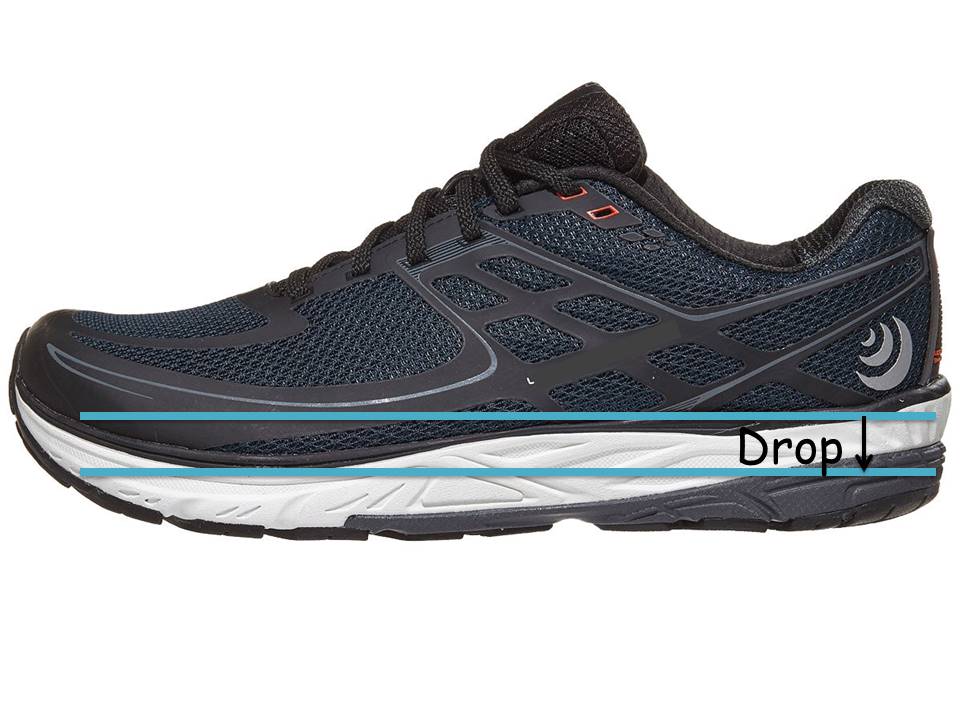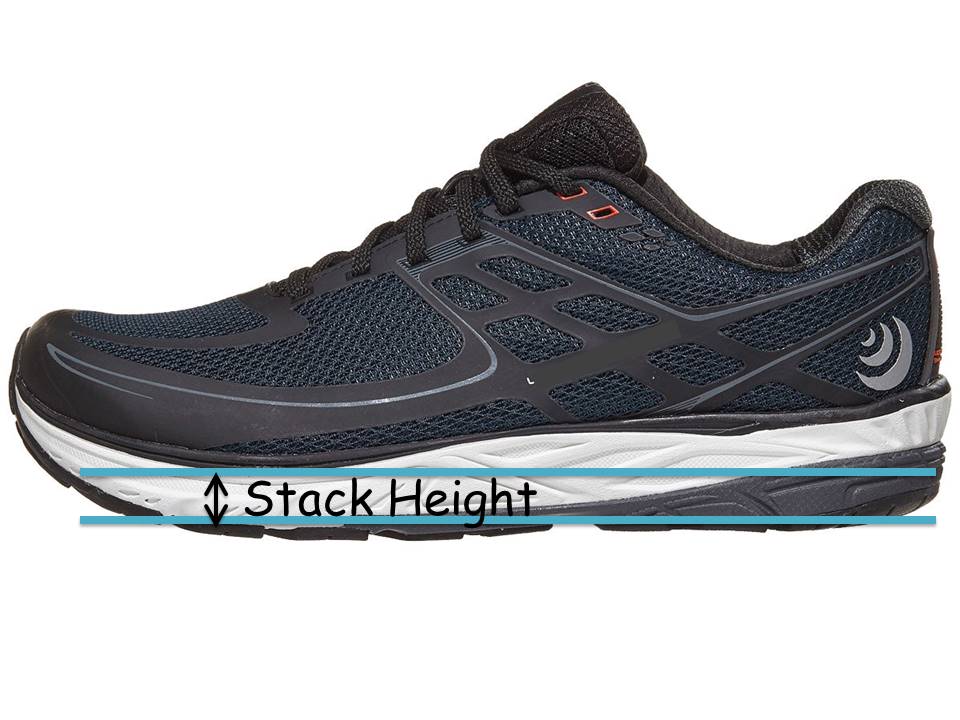
Every runner blames their shoes one day!
Running Shoe Metrics

Drop
Running shoe drop is the difference in height from the heel to the forefoot.
Why should you care?
This is important for calf muscle function. Change your drop suddenly and your calf may or may not be happy.

Stack Height
This is the height of the cushion along the sole of the shoe. A shoe with a larger stack height inherently has more cushion, while a minimalist shoe is simply and outsole with no cushion.
This is important for 2 reasons: 1) shock attenuation as the runner contacts the ground, 2) push off as the runner works to propel against gravity and drive their body forwards.

Rocker
Rocker is a natural contour built into the shoe that mimics the motion of the foot as it strikes the ground.
This is important for runners that contact the ground initially with their heel and push off through their forefoot. All runners regardless of foot strike push off through their forefoot. A natural rocker built into the shoe will support the movement from the heel to the forefoot and reduce the amount of motion needed particularly at the great toe during push-off.
Types of Running Shoes
Minimalist
This shoe is simply an outsole designed to protect the foot from road debris.
Neutral Cushion
This is the most common type of running shoe. Think of a neutral shoe as an outsole plus cushion. These come in a variety of drop height, stack height and rocker.
Stability
This shoe has more rigidity built into the structure of the shoe to support the foot.
Motion Control
This shoe is like a lead brick on your foot. There is substantial material added to the shoe to help with control of the foot.
Maximal
This is a shoe that is basically cushion on steroids. Want gush then you have found your match.
Carbon Plate
Want cushion, a rocker and a little boost in efficiency then go this route. Unfortunately not so kind to the pocket book.
How Long Should My Running Shoes Last?
A general rule of thumb shoes should last between 300-500 miles. Really…a 200 mile discrepancy. Why don’t we have better metrics…well we just haven’t created them yet. Someone who is 6′ and 250lbs is going to be a lot harder on shoes than a 5′, 120lb runner. The answer truly is, it depends:
What is your weekly mileage?
Do you run in all weather?
How big and/or small are you?
How old are your shoes?
Do you live your whole day in your running shoes?
So what running shoe should I buy?
The bottom line is your running shoes should be comfortable. Research tells us comfort is actually the best metric to base your shoe selection. The biggest issues with footwear are when runners too aggressively change their shoe metrics i.e. going from a 12 mm drop shoe to a zero (0 mm) drop shoe.
